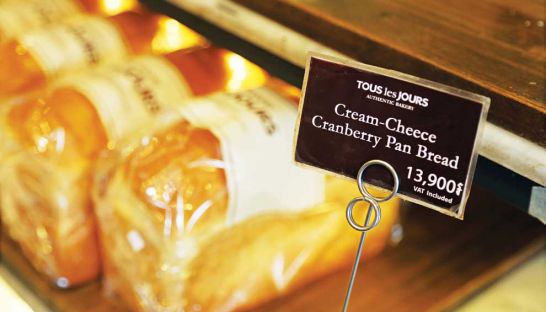Cambodia: Government order to display prices in riel currency fails to stick
A government prakas that requires all businesses to post prices of their goods and services in the local riel currency has had little impact on pricing practices, with the vast majority of businesses in Cambodia continuing to quote prices in US dollars and authorities showing little resolve to enforce the decree.
The Ministry of Commerce issued the prakas in July in what it stated was an effort to increase consumer transparency and boost the use of the national currency.
“It is compulsory for all businesses and service providers that are doing business in Cambodia need to put a price tag on their products and services in Khmer riel,” the prakas announced. “Any business that doesn’t implement the order will be held responsible by law.”
Ministry spokesperson Soeng Sophary said yesterday that in the three months since the prakas was announced a few businesses had implemented changes to comply with the new pricing rules. However, the overwhelming majority had completely ignored the prakas, with the ministry admittedly reluctant to apply pressure on them.
“We cannot fully enforce the law strictly due to the current living conditions of our people and the current limited knowledge [of the prakas] among businesses,” she said, adding that she hoped businesses would voluntarily comply to serve as models for others to follow.
The toothless pricing directive builds off a similar initiative announced in 2013 that also fell flat on the lack of enforcement and confusion surrounding the vague penalties for non-compliance.
While Sophary said the prakas issued in July requires that all registered businesses to post prices of goods and services in riel, she said small vendors and merchants in local markets are exempted from the requirements.
Business owners have said they support the objectives of the prakas, but are unwilling to comply unless pricing in riel is fairly and universally enforced.
Kim Rithy, owner of Koung Y Phone Shop, said his customers are accustomed to dealing in US dollars for larger purchases such as mobile phones, and displaying prices in riel could create confusion or the perception that his store’s products were more expensive.
“We worry that if we post the prices of our products in riel alone, it will be an inconvenience for our customers and they will just go to other shops instead,” he said.
He said the US dollar was so deeply entrenched in Cambodia’s consumer mentality that it would be a hard battle to convince consumers to use riel for purchases.
“Although it is hard, I think we can overcome the challenges [of dollarisation] if all shops comply,” he said. “I would be happy to switch to riel as it helps promote our national currency.”
Lim Heng, vice president of the Cambodia Chamber of Commerce, said if the government was truly serious about implementing the pricing rules then it should include measures that make it legally binding for certain small transactions to be settled in riel.
He also urged the government to provide exemptions for businesses that sell products and services worth more than $100, the equivalent of 400,000 riel.
“This law cannot be enforced strictly,” Heng said.
“And if we have a law but it is not implemented, then it is meaningless.”
Source: http://www.phnompenhpost.com/business/government-order-display-prices-riel-currency-fails-stick


 English
English




